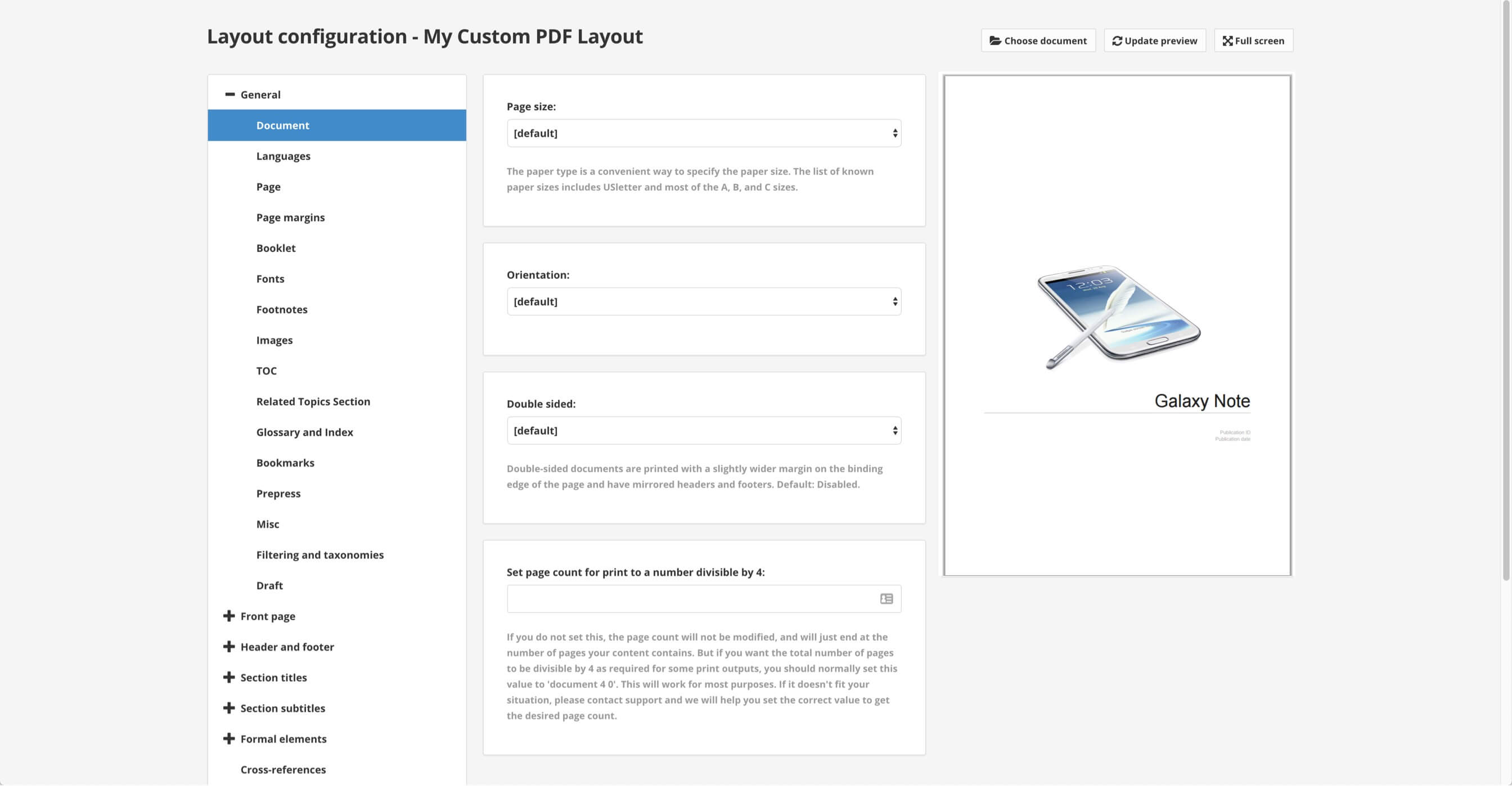- Paligo Documentation
- Publish
- PDF Styling
PDF Styling
To control the look and feel of your PDF outputs, we recommend that you follow the PDF Styling Workflow. This involves creating or editing a PDF layout, which is where you define the style settings for your PDF. You can use the PDF layout to control a wide range of styles for your PDF, including font styles and colors, spacing, and page breaks, all without any programming knowledge.
Paligo comes with a built-in PDF layout that you can use. You can also Create a Layout and edit them to meet your own requirements. To find out about the various PDF styling and customization settings, see PDF Layout Editor Options.
For PDF, all of the styling is done through the layout (there is no CSS involved). When you publish, Paligo uses the underlying XSLT to take your content and transform it into PDF and applies your styling choices in the process.
 |
Note
To make changes beyond what the Layout Editor provides, you will need a customization. Please contact your account manager or support for more information.